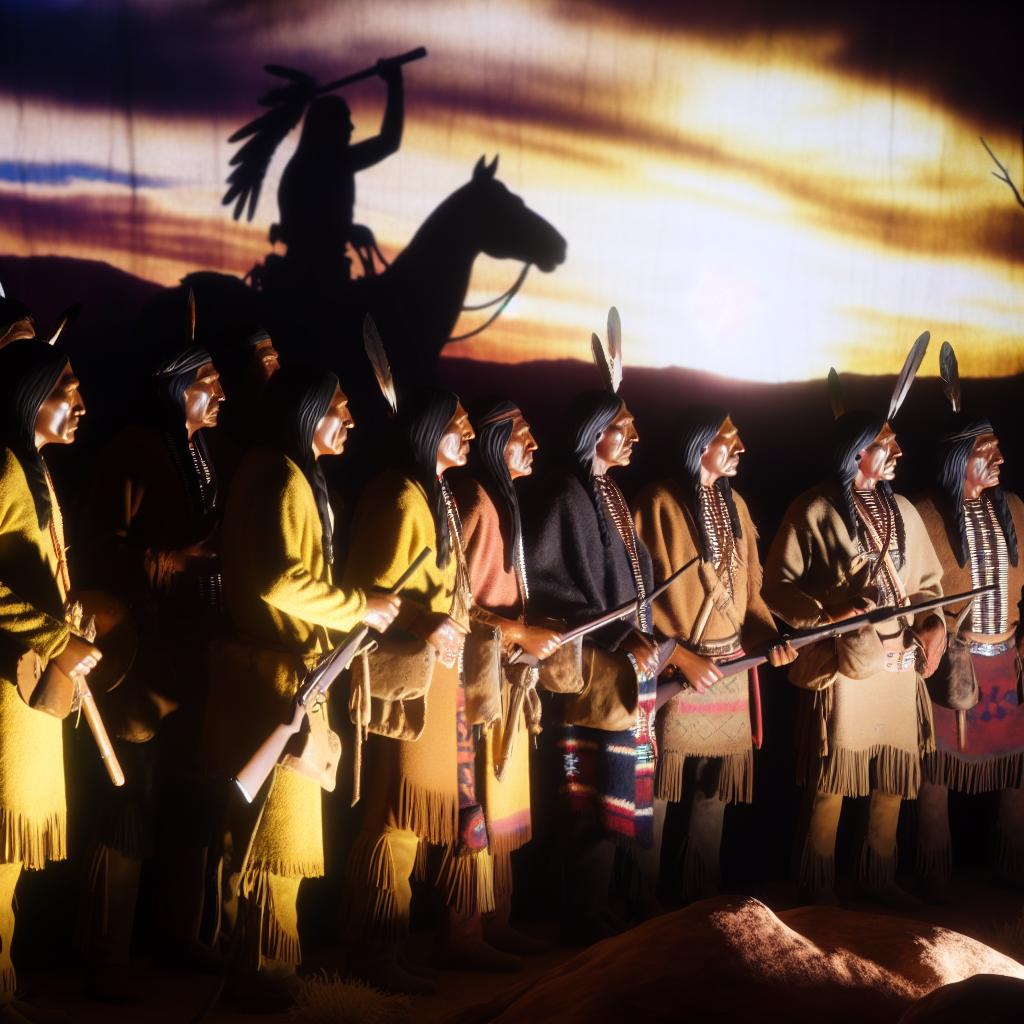The Apache Wars
The Apache Wars were a series of armed conflicts that transpired between the Apache tribes and the United States Army, enduring from the 1850s until the late 1880s. These confrontations arose from entrenched tensions revolving around land disputes, resource allocation, and the cultural impositions imposed upon the Apache by American settlers and government authorities. This period is marked by a series of remarkable events and individuals whose influence extended beyond the military sphere, affecting cultural landscapes and historical narratives.
Understanding the Origins of Conflict
The genesis of the Apache Wars can be traced to overarching issues concerning sovereignty and territory. As the United States expanded westward, Indigenous lands were increasingly encroached upon. The Apache, known for their strong ties to their land, found themselves in a conflict of survival as settlers and the government sought to inhabit and claim their territories. Central to these conflicts was a fundamental disagreement over land ownership and cultural practices, wherein the Apache’s communal and nomadic lifestyle clashed with the settlers’ agricultural and permanent land usage notions.
Key Events and Battles
During the decades of conflict, several pivotal events and battles stood out, shaping the course and the eventual outcome of the wars. Understanding these key moments provides insight into the complexities and dynamics of the conflict.
Bascom Affair
One of the inciting incidents, the Bascom Affair in 1861, arose from miscommunications and misconceived intents. Lieutenant George Bascom’s meeting with a band of Chiricahua Apache spiraled out of control when he demanded the return of a boy suspected of being kidnapped by them. This misunderstanding not only escalated tensions but also sowed seeds of distrust, significantly impacting subsequent interactions between the Apache and the U.S. Government. It highlighted the underlying cultural disconnect and communication barriers that plagued relations.
Battle of Apache Pass
Another notable engagement was the Battle of Apache Pass in 1862. This confrontation is distinguished by the U.S. Army’s innovative use of artillery in open combat against Apache warriors, showcasing a dramatic shift in military tactics utilized against Indigenous forces. Overpowering Cochise’s warriors during this battle introduced a new warfare dynamic, emphasizing the technological disparity between the contending groups. Despite their prowess and ingenuity, the Apache found themselves dealing with a formidable and technologically advanced military opponent.
Geronimo’s Resistance
Among the prominent figures of the Apache resistance was Geronimo, a leader of the Bedonkohe Apache. Geronimo became a symbolic figure of defiance and resilience against both U.S. and Mexican military forces throughout much of the Southwest. His defiance was not just a reaction to external pressures but a deeply ingrained aspect of his cultural and spiritual existence.
Key Features of Geronimo’s Strategy
The tenacity of Geronimo’s resistance efforts can be attributed to several key strategic elements that provided the Apache with the ability to endure significantly against all odds.
Tactics and Mobility: At the core of Geronimo’s effectiveness was his adeptness at guerrilla warfare. His intimate knowledge of the challenging terrain enabled the execution of surprise attacks followed by quick retreats, which significantly baffled and frustrated pursuing forces. The agility of his band facilitated their evasion and sustained resistance, underscoring the tactical acumen Geronimo harnessed to prolong the Apache’s fight.
Cultural and Spiritual Resolve: Geronimo’s campaign was not solely grounded in military objectives but was deeply enriched by cultural beliefs and spiritual vigor. This aspect inspired his followers, providing them with morale and a sense of purpose. His leadership was characterized by a unique ability to emanate cultural solidarity and spiritual fortitude, which were integral in sustaining their prolonged confrontation against formidable external forces.
The Final Surrender
Geronimo’s eventual surrender in 1886 marked a significant turning point, symbolizing the conclusion of major armed resistance by the Apache against the U.S. forces. This event unfolded after a relentless pursuit led by General Nelson A. Miles, during which several negotiations took place. Geronimo’s decision to surrender did not come lightly, reflecting the exhaustion and realization of the overwhelming odds faced by his people. His capture epitomizes the subsequent subjugation and forced assimilation methodologies implemented, leading to the placement of the Apache onto reservations.
Aftermath and Legacy
The cessation of the Apache Wars heralded a profound transformation in the socio-political dynamics affecting Apache societies. With the wars concluded, many Apache communities were subjected to policies of assimilation and relocation, which profoundly impacted their cultural continuity and social structures. Despite these changes, the legacy of resistance, embodied by figures like Geronimo, continues to wield significant influence in shaping the cultural identity and historical narrative of Apache people today.
While Geronimo spent his remaining years as a symbol, both in American culture and abroad, aspects of his story have been romanticized and often misconstrued. In these narratives, he emerges not merely as a warrior but as a cultural icon whose life encapsulates broader themes of resistance and survival against all odds. His life and the Apache Wars, in general, remain critical chapters in the broader context of North American history, serving as enduring reminders of the resilience displayed by Indigenous tribes amid the adversities presented by colonial expansion and cultural conflict.
For those interested in a more in-depth exploration of the Apache Wars and Geronimo’s enduring legacy, engaging with detailed historical literature and archives curated by experts in Indigenous studies provides a comprehensive understanding of the intricate dynamics and enduring ramifications of these conflicts.

